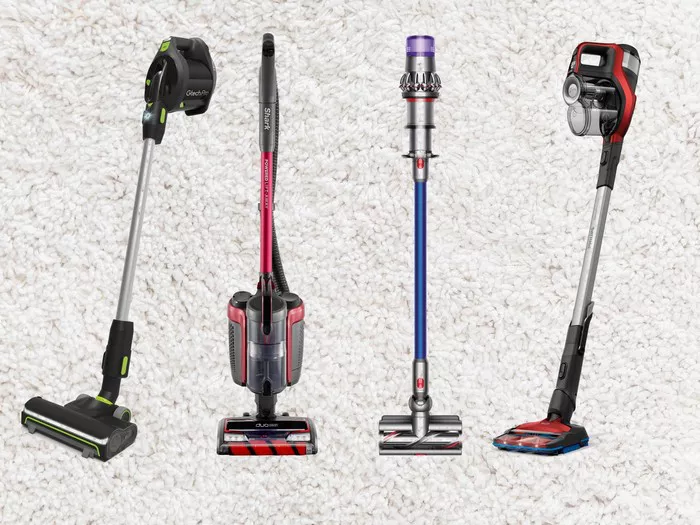In the history of home cleaning technology, the vacuum cleaner’s development is a turning point. The vacuum cleaner has come a long way from its modest origins to its contemporary versions, becoming a vital instrument for preserving hygienic conditions in residential and business settings everywhere. We explore the intriguing history of the vacuum cleaner’s invention in this extensive guide, including its beginnings, important inventors, technical developments, and long-lasting effects on society.
Origins of the Vacuum Cleaner:
The idea of automated cleaning was conceived decades before the vacuum cleaner. The earliest attempts to automate the cleaning process date back thousands of years to different ancient cultures. For example, brooms, brushes, and sponges were some of the primitive tools used by ancient societies like the Greeks and Romans to sweep and clean floors.
Still, important advances in cleaning technology did not appear until the 19th century. The “sweeping machine” that Ives W. McGaffey designed in 1869 was one of the first models of the vacuum cleaner that we use today. McGaffey’s apparatus had a hand-cranked fan motor that produced suction to clear carpets and floors of dust and debris.
Key Inventors and Innovations:
The early 20th century innovations of Hiram Herrick and John Thurman were the real technological breakthrough in vacuum cleaner technology. The “Blowing and Sucking Machine,” invented by Herrick in 1901, used an engine running on gasoline to provide suction for cleaning. Herrick’s creation was useful, but it was unwieldy and unfit for everyday usage.
The “pneumatic carpet renovator,” invented by John Thurman and patented in 1899, was a major advancement in vacuum cleaner technology. Thurman’s apparatus used a gasoline-powered motor to generate suction, which was then transferred to a nozzle linked to the cleaning head via a system of pipes. Despite using a heavy and noisy machine, this made cleaning carpets and rugs more effective.
The Electrolux Era:
The Electrolux Model V, which was first introduced in 1921, marked the beginning of the development of the contemporary vacuum cleaner. The Model V vacuum cleaner, created by Swedish engineer Axel Wenner-Gren, was the first to include a number of characteristics that are still present in more modern versions, such as a motorized brush roll, disposable dust bags, and a lightweight, portable design.
The widespread usage of vacuum cleaners in homes all over the world was made possible by the popularity of the Electrolux Model V. The ease of use and efficiency of vacuum cleaners were further improved by later inventions like the creation of lightweight materials like plastic and the advent of electric-powered machines.
Technological Advancements:
After the Electrolux Model V was introduced, vacuum cleaner technology developed at a breakneck speed for several decades. A variety of advancements were launched by manufacturers with the goal of enhancing user ease, energy efficiency, and performance.
The development of bagless vacuum cleaners in the latter half of the 20th century was one significant achievement. These types used cyclonic separation technology to remove dust and debris from the air, making maintenance and emptying simpler than with disposable dust bags.
Furthermore, the advent of robotic vacuum cleaners in the early 21st century completely changed how people clean their homes. These hands-free cleaning solutions for busy homes are made possible by autonomous gadgets that are outfitted with sensors and AI algorithms. These machines can navigate and clean floors with little assistance from humans.
Impact on Society:
The invention of the vacuum cleaner has had a profound impact on society, not only in terms of household cleanliness but also in terms of labor-saving convenience and public health. Prior to the widespread adoption of vacuum cleaners, cleaning floors and carpets was a labor-intensive task that often required hours of manual labor.
With the advent of vacuum cleaner technology, cleaning became faster, more efficient, and less physically demanding. This allowed people to devote more time and energy to other pursuits, leading to improvements in overall quality of life. Moreover, vacuum cleaners played a crucial role in reducing indoor air pollution by removing dust, allergens, and other harmful particles from indoor environments.
In commercial settings, vacuum cleaners have become indispensable tools for maintaining cleanliness and hygiene in offices, hotels, hospitals, and other public spaces. The ability to quickly and effectively remove dirt and debris from floors and carpets is essential for creating a clean and inviting environment for employees, customers, and visitors.
Conclusion:
An important turning point from human work to automated efficiency in cleaning technology was reached with the creation of the vacuum cleaner. From its modest beginnings in the 19th century to its contemporary incarnations, the vacuum cleaner has developed into a vital domestic tool that contributes significantly to the preservation of hygiene, cleanliness, and general well-being.
The future of vacuum cleaner innovation is bright, with continuous efforts aimed at enhancing performance, energy efficiency, and consumer ease as technology progresses. The basic vacuum cleaner, whether it be an advanced robotic model, a bagless canister vacuum, or an upright type, continues to be a timeless representation of human creativity and invention in the pursuit of cleaner, healthier living environments.

